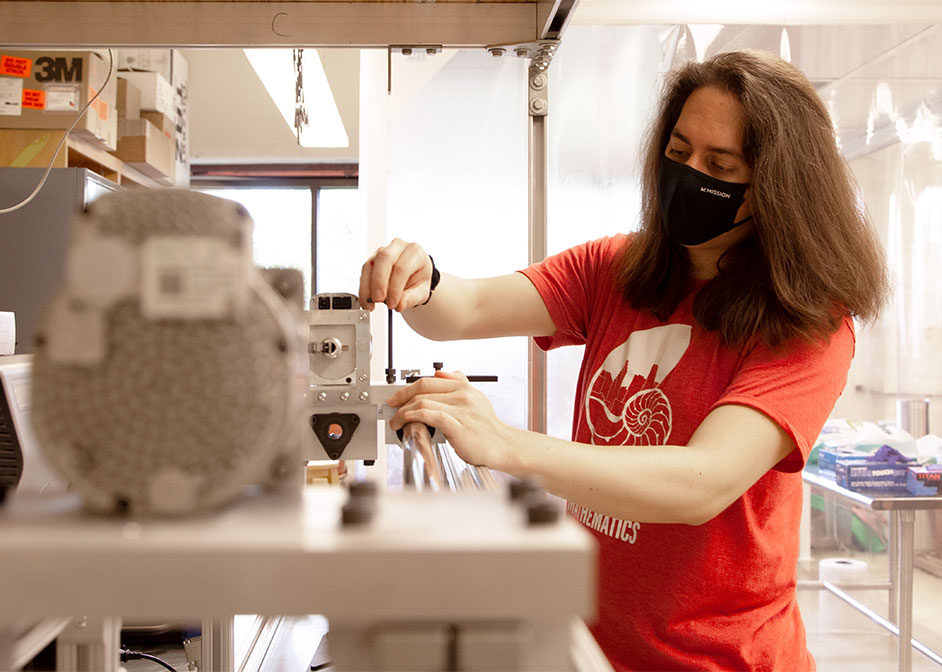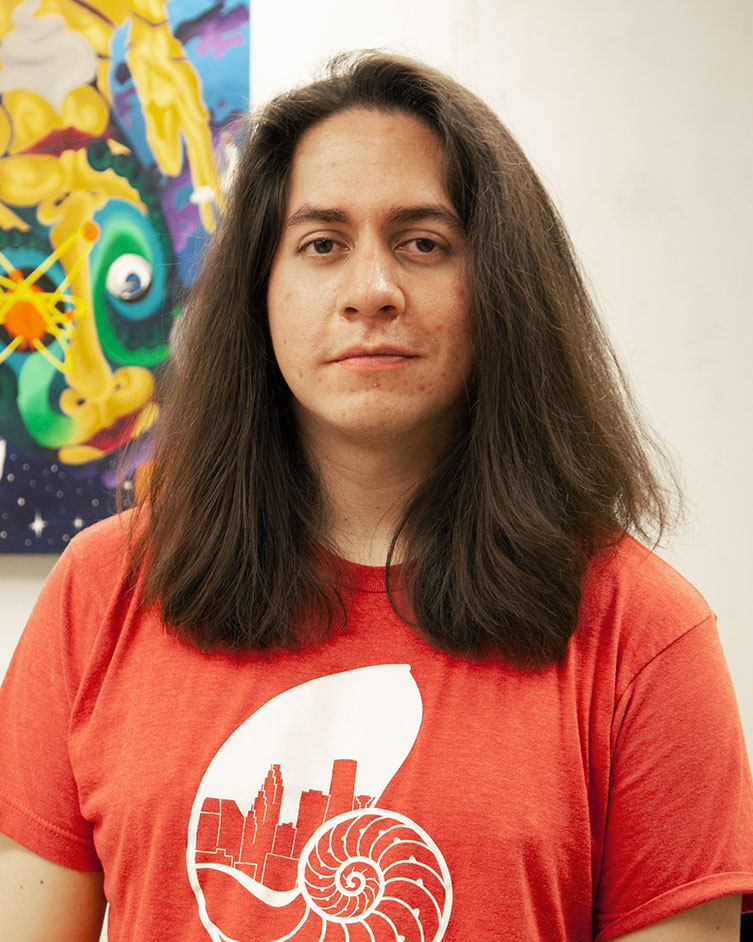NSF Awards Physics Ph.D. Student Graduate Research Fellowship
Involvement in UH Student Organization Boosted Application
There is no question failure and perseverance are two necessary components on the road to success. Alejandro Ramirez, a doctoral student in physics, knows it all too well.

The University of Houston College of Natural Sciences and Mathematics student received a National Science Foundation Graduate Student Research Fellowship as a second-year doctoral student, a triumph after facing previous rejections.
The fellowship lasts five years and provides students a three-year annual stipend of $34,000, along with an allowance of $12,000 to UH for cost of education.
“It was a long time coming,” he said. “I actually woke up to a notification from an email. I saw it was from the NSF, and I was like – oh boy.”
He hesitated to open the email because he had been rejected by the NSF when he applied for the fellowship as an undergraduate. And before that, he applied for a Barry Goldwater Scholarship but was also declined.
“After that string of rejections, I was gearing myself up for another no. I wasn’t expecting congratulations as the first word in the email. This was a huge accomplishment. Everyone around me knew how much work I put into my proposal,” he said.
Assistant professor of physics Andrew Renshaw, Ramirez’s advisor, not only helped Ramirez on his fellowship application, but encouraged him to pursue a Ph.D. when he was an undergraduate physics student.

“Alejandro is a very talented and ambitious young physicist,” said Renshaw. “He has continued to develop his research and presentation skills, all while helping to build a strong community within the UH chapter of the Society for Advancement of Chicanos/Hispanics and Native Americans in Science. He also understands that to be a top researcher you must see past initial failures and learn from them. He puts this into practice with everything he does.”
Work on DarkSide and Medical Imaging
Ramirez is currently working on two projects. One, he explains, is a research and development project for DarkSide, conducted by the Global Argon Dark Matter Collaboration, which Renshaw is a member of.
“The project searches for dark matter particle candidates, such as weakly interacting massive particles,” Ramirez said. “We’re building a machine to make parts that are going to be used to construct prototype detectors at CERN, the European Organization for Nuclear Research.”
He adds the other project is sort of a spin-off of DarkSide. He and other members of Renshaw’s UH group are taking detection technologies from DarkSide and applying them to the field of medical imaging. Specifically, they are contributing to positron emission tomography or PET scans.
“We’re using liquid argon detection in that field,” he said. “We’re finding we can actually improve the medical imaging experience by refining the resolution and efficiency that these other traditional PET scanners have so many issues with.”
Ramirez pursued an education in physics, partially at the encouragement of his father.
At the beginning of Ramirez’s academic career, both he and his father were keen on an aerospace engineering degree. However, Ramirez did not know that years ago, his father completed a bachelor’s degree in physics from the University of Mexico.
“I just knew he went to college. He just sort of started telling me all the things he learned in physics, seismic physics. In Mexico, there are a lot of earthquakes, so the seismic and geologic surveys are important there.”
Ramirez began digging into physics and realized it could be so interdisciplinary.
Co-Founding a Student Organization at UH
One of Ramirez’s greatest accomplishments so far at UH, and what helped him stand out on his application, was his involvement co-founding the first UH chapter of the Society for Advancement of Chicanos/Hispanics and Native Americans in Science, or UH SACNAS, in early 2019.
“I didn’t want the organization to be like other student groups where you just go to the general meetings and go to a banquet at the end of the year. I wanted this to be something I could build with other people and have it flourish.”
He also founded the society because he wanted to improve the undergraduate experience for students by creating a support system he wishes he had.
“My undergraduate experience was a little bit rough at the beginning,” he said, “because a lot of my scholarships fell through. Luckily, I had a job, and I was holding that in addition to commuting every day to school. So, I thought if there was a society to support people who are going through these hardships by giving advice or tips, that’s another reason I founded this society with my friends.”
Ramirez plans to graduate in about three years. After graduation, he is interested in joining a national lab or going into industry.
- Rebeca Trejo, College of Natural Sciences and Mathematics
April 19, 2021